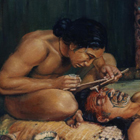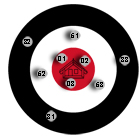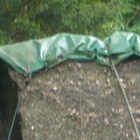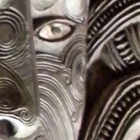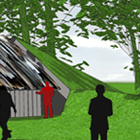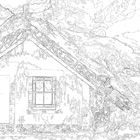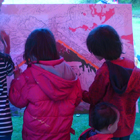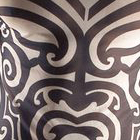Hinemihi
| Program | CULTURE |
| Grade 2 Listed Maori Meeting House | |
| Scale | 200 sqm |
| Location | Clandon Park, Surrey, UK |
| Stage | Design |
| Client | National Trust, NZ Historic Places Trust, Ngati Hinemihi, Ngati Ranana, UCL Institute of Archeology |
| Budget | € 250000 |
| Design Year | 2013 |
The meeting house Hinemihi o te Ao Tawhito (Hinemihi of the Old World) was built in 1881 and stood on the North Island in the village of Te Wairoa, a few kilometres from the Pink and White Terraces on the shores of Lake Rotomahana. On June 10 1886, Mount Tarawera erupted, destroying the village and killing 153 of its inhabitants. Hinemihi provided shelter to numerous people during the eruption and was one of the few buildings to survive. In 1892 the Governor of New Zealand, the fourth Earl of Onslow, dismantled and shipped Hinemihi to England with instructions for reassembly in Clandon Park, Surrey, which became a National Trust property in 1956.
The ‘whare in Surrey’ is today the subject of innovative developments regarding her conservation. Maori believe wharenui are connected to their ancestral origin and so this meeting house is referred to as a person - Hinemihi is a she - and is spoken to! In order to keep Hinemihi alive, the conservation strategy could not be one of architectural cryogenics: a building frozen in time. As Hinemihi is not a museum piece, the strategy has to liberate the artifact from the glass cabinet and to celebrate events in and around ‘Clandon marae’ (a public yet rural forum). This idea of a ‘living monument’ required a fundamental shift in thinking on the part of the National Trust.
After all, talking to buildings is not common; as with the peculiar image of Doctor Doolittle who talked to animals, such a notion could be misconstrued as madness.
As Britain’s largest land owner, and with nearly as many members as there are citizens of New Zealanders (over 3 million), the National Trust has been convinced of the potency of a humble ‘grass hut’ to radically transform modern notions of architectural conservation. The significance of conserving Hinemihi is emphasised in the UCL Dept of Archaeology’s publication ‘Decolonising Conservation’ (Dean Sully). Furthermore, the recent fire that destroyed the Cutty Sark raises the question whether conservation should preserve the object or its use? If this tea clipper hadn’t been in a dry dock but preserved to once again sail the oceans it may not have caught fire. From maritime to Maori-time, Hinemihi is leading the way in showing how the use of a building is fundamental to its conservation.
Anyway, enough conversation about conservation. WHAT_architecture is working with:
• Ngati Hinemihi (Lake Taupo and King Country)
• Ngati Ranana (London)
• Te Kohanga Reo (the language nursery)
• UCL Department of Archaeology
• National Trust
The design proposal recognises the existence of an emerging ‘British-Maori’ identity and with this the possible development of a kaupapa (protocol) - such as women talking from the paepae (the orator's bench) - more progressive than those found in Aotearoa (NZ). In the ensuing months, the steering komiti will determine via consultation which one of five (5R) strategies will inform the development of Hinemihi. An RRRRRchitecture deriving from either: R1: repair, R2: restoration, R3: reuse, R4: redevelopment or R5: relocation.
Decolonising Conservation edited by Dean Sully
The House With the Golden Eyes by Alan Gallop
Furthermore, for a better encapsulation of architecture in Aoteoroa, we have the following blogs highly articulate of the current 'local' position:



